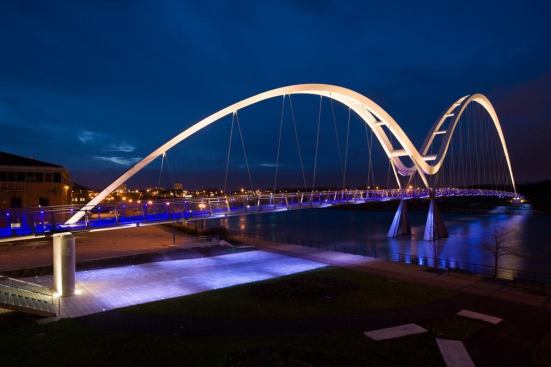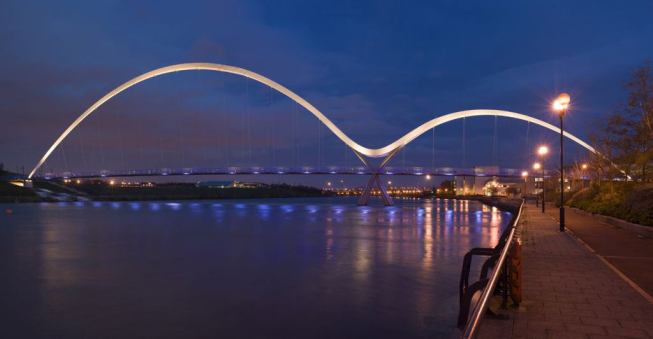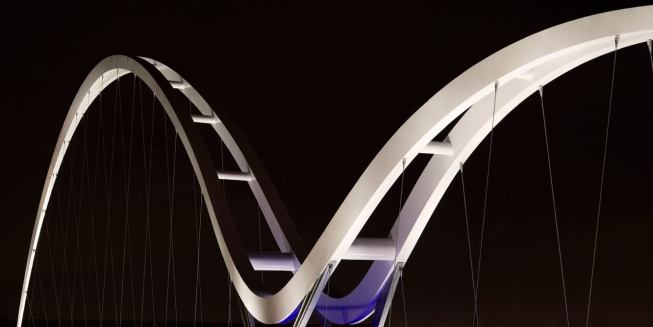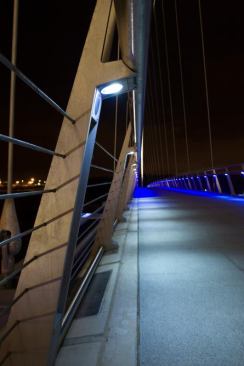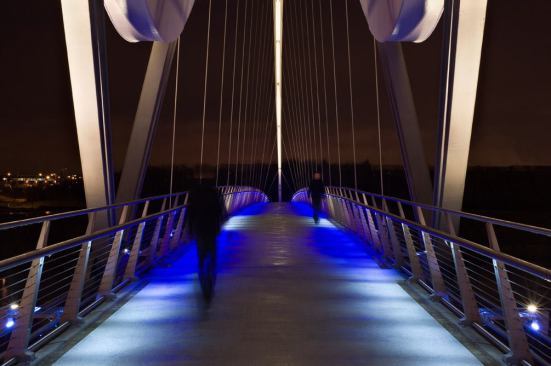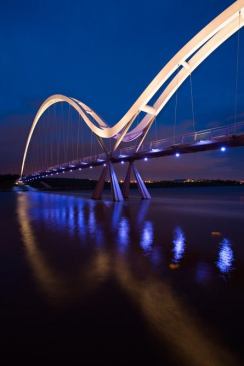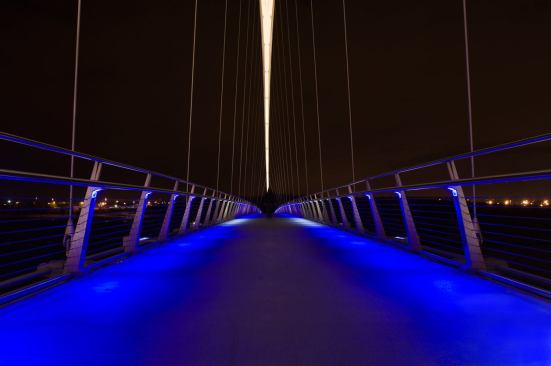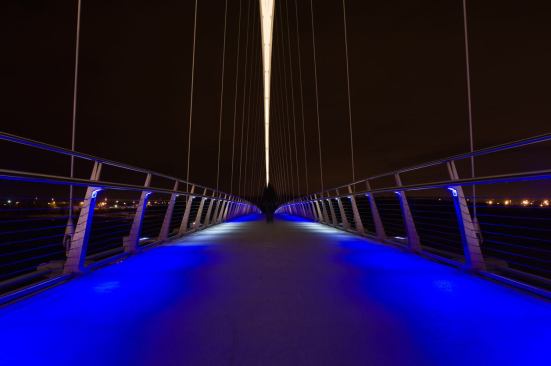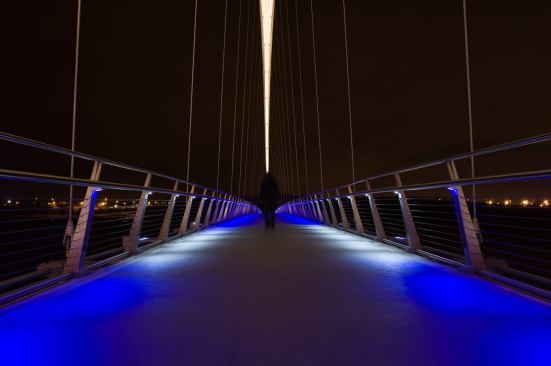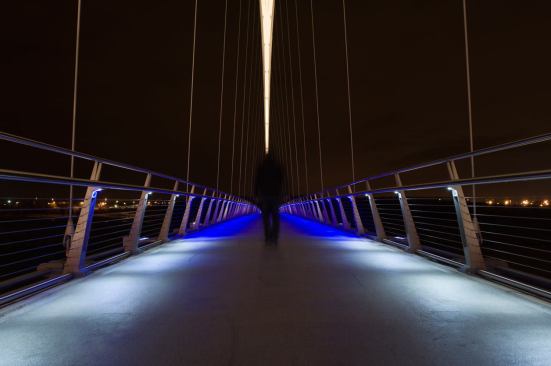James Newton
Designed to encourage development in the areas on both sides of the River Tees in Stockton-on-Tees in northeast England, this bridge takes speculative design to a new level. The city wanted the bridge’s image to be as powerful at night as it would be by day. So the designers worked with the client and the city to encourage pedestrian traffic.
The lighting design uses white and blue light, and the colors complement each other to outline the bridge’s form. The bridge’s main upper structure—a sinuous wave curve—is lit from end to end with metal halide sources positioned in cantilevered brackets mounted at the deck. The fixtures are concealed to minimize glare, but still allow for easy maintenance: The cantilevered arms are on hinged brackets and they can be pulled up and relamped without the need for additional equipment. The rotatable lenticular lenses produce a thin line of light, and aiming was key so that there is no light spill.
Along the walkway, the designers combined two blue and one white 1W LEDs with a durable radar sensor in a custom handrail. The combination creates an unexpected interactive feature, which is revealed when a person starts to cross the bridge: As the sensor is activated, the LED changes from blue to white with a one-second fade. When the sensor looses contact, the white LED cross-fades back to blue over four seconds and the pedestrian experience is completely transformed as people become “painters” and leave a trail of light behind them.
Jury Comments: The pedestrian experience through the entire crossing is considered, including the exit and entry points in and around at each end of the bridge. • The lighting engages with the individual.
No recommended contents to display.
